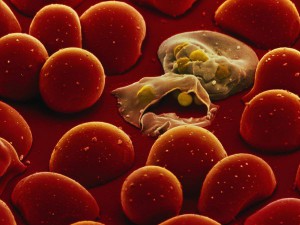One Hopeful, One Tragic Outcome For PAM Victims
By Dr. James Palermo // August 27, 2013
INVESTIGATIONAL DRUG MAY PROVIDE HOPE
ABOVE VIDEO: News reports on the South Florida boy, Zachary Reyna, who has been battling a very rare infection called primary amebic myeloencephalitis at Miami Children’s Hospital since early August. His doctors detected no brain activity on a comprehensive evaluation on Saturday, he was pronounced brain dead and, according to his family, was taken off life support Sunday night. (Video by FemBossNews)
This summer two children, one in Arkansas and one in Florida, who after playing in water that was contaminated with the brain attacking Naegleria fowleri, an organism found naturally in freshwater lakes, rivers, ponds and hot springs in the United States, particularly in southern-tier states, developed the rare and deadly brain infection caused by N. fowleri known as primary amebic meningoencephalitis (PAM), aka the “brain-eating ameba.”

According to the Centers for Disease Control (CDC), just one victim of PAM recovered out of the 128 who were infected in the U.S. over the past 50 years. The most recent known Florida infection prior to the one this summer occurred in August 2011 and resulted in the death of a Brevard County teenager who was likely exposed to the organism while swimming in the St. John’s River.
ARKANSAS GIRL RECOVERING AFTER EXPERIMENTAL TREATMENTS
Twelve year old Kali Hardig of Arkansas was diagnosed with primary amebic meningoencephalitis after swimming in a sand-bottom lake at a water park in Little Rock in July, and in August Zachary Reyna, also 12 years old, of LaBelle, Florida, contracted an N. fowleri infection after kneeboarding in a ditch near his home.

Kali remains hospitalized at Arkansas Children’s Hospital in Little Rock where physicians used a multi-drug regimen on her that included anti-fungal drugs and antibiotics as well as an investigational drug called miltefosine, and cooled her body in an attempt to reduce the damage to brain tissue caused by the ameba.
After weeks in the intensive care unit on a ventilator she is now responsive and her condition is stable, but she still has weeks of rehabilitation ahead. Her physician team attributes her improving condition to early detection and experimental treatments.
INVESTIGATIONAL DRUG MADE AVAILABLE TO TREAT PAM
According to the CDC, the drug, miltefosine, had been used successfully in treatment regimens for other FLAs, such as granulomatous amebic encephalitis caused by Balamuthia mandrillaris and Acanthamoeba species, appearing to offer a survival advantage for patients with these often fatal infections. With CDC assistance, miltesofine has been made available for single-patient emergency use with permission from the U.S. Food and Drug Administration. Miltefosine had not previously been used successfully to treat a Naegleria infection, but the length of time it had taken to import miltefosine from abroad had made timely treatment of fulminant Naegleria infections difficult.
FLORIDA BOY SUFFERS IRREVERSIBLE BRAIN DAMAGE

Zachary’s treatment regimen at Miami Children’s Hospital, which also included miltefosine, eradicated the N. fowleri infection. However, over the weekend family and friends said their final goodbyes, as he remained on a ventilator after his doctors said that he was brain dead with no hope for recovery from the extensive brain damage caused by the infection. On a FaceBook page his family has indicated that “his organs are very strong,” and through organ donation, “Even though Zac has passed, he will still be saving many lives.” Our most sincere condolences go out to the Reyna family.
AMEBA IN WATER ENTERS NOSE, MIGRATES TO BRAIN
Humans become infected when water containing N. fowleri enters the nose and the ameba migrates to the brain along the olfactory nerve.
Signs and symptoms of PAM usually start within a week after infection and include frontal headache, fever, nausea and vomiting. As the disease progresses, stiff neck, confusion, loss of balance, seizures, hallucinations and finally coma occur.
Because of its lethal nature, the possibility of PAM can be frightening, but, according to the CDC, there have only been 31 reported infections in the U.S. in the 10 years from 2003 to 2012, despite hundreds of millions of recreational water exposures each year. By comparison, in the ten years from 1996 to 2005, there were more than 39,000 drowning deaths in the United States.
N. FOWLERI UBIQUITOUS IN FLORIDA FRESHWATERS
With the wide variety of popular recreational opportunities available in Florida’s freshwater, almost all of us are at risk.

According to the CDC, personal actions to reduce the risk of N. fowleri infection should focus on limiting the amount of water going up the nose and lowering the chances that N. fowleri may be in the water. These actions could include:
- Hold your nose shut, use nose clips or a full scuba mask, or keep your head above water when taking part in water-related activities in bodies of warm freshwater.
- Avoid putting your head under the water in hot springs and other untreated thermal waters.
- Avoid water-related activities in warm freshwater during periods of high water temperature and low water levels.
- Avoid digging in, or stirring up, the sediment while taking part in water-related activities in shallow, warm freshwater areas.
These recommendations make common sense but are not based on any scientific testing since the low numbers of infections make it difficult to ever show that they are effective.












